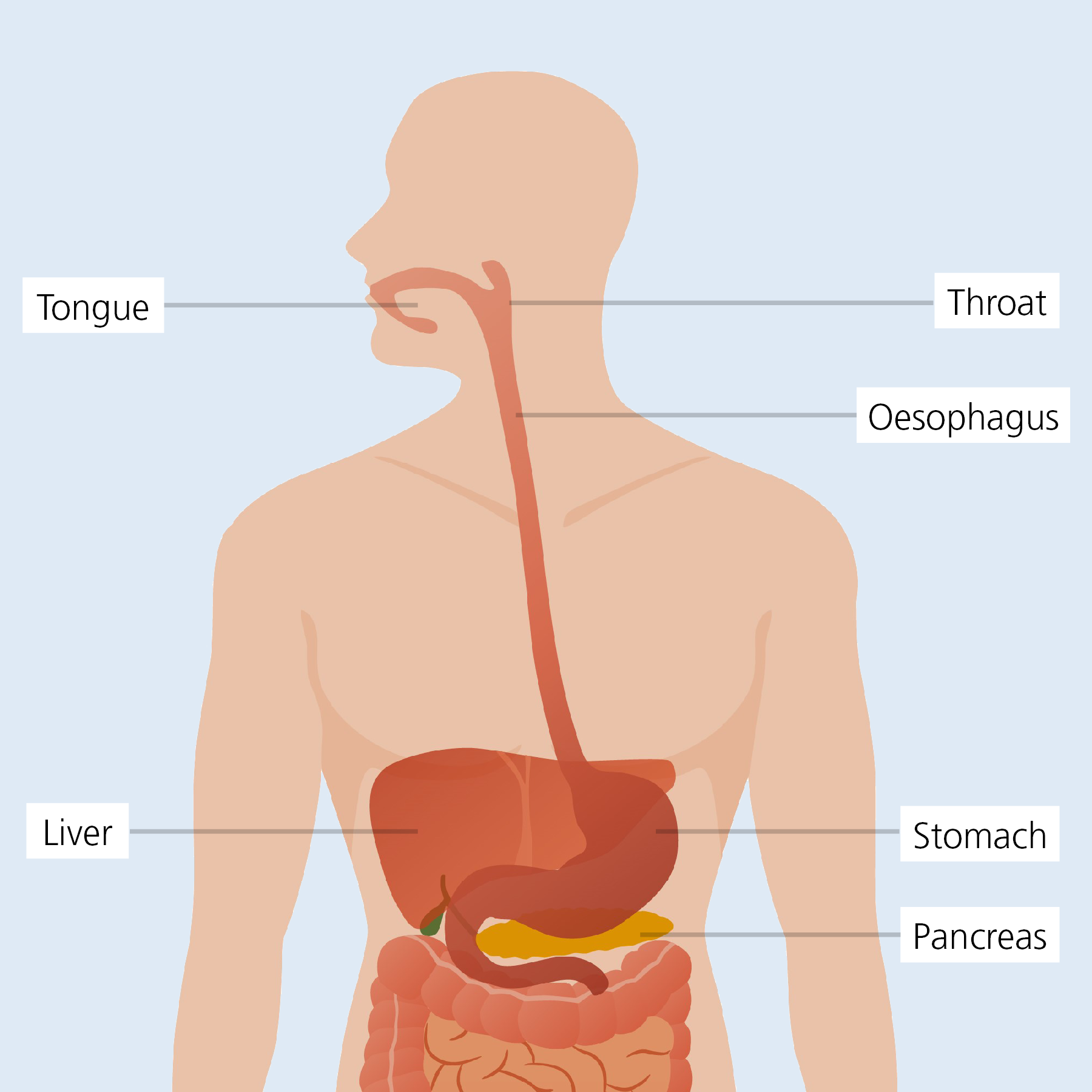SWALLOWING DIFFICULTIES:
EOSINOPHILIC OESOPHAGITIS?
SWALLOWING DIFFICULTIES:
EOSINOPHILIC OESOPHAGITIS?
SWALLOWING
DIFFICULTIES:
EOSINOPHILIC
OESOPHAGITIS?
What is EoE ?
EoE (eosinophilic oesophagitis) is a rare chronic inflammatory condition affecting the oesophagus (also known as the gullet or food pipe). Its origins and causes are not yet fully understood. However, it appears that an ongoing allergic response to food or an environmental factor leads to this inflammation. The inflammation is identified by the presence of substances released by specialised white blood cells which are normally not found in the lining of the oesophagus (the mucosa). These cells are called eosinophils and give EoE its name. The ‘-itis’ at the end of the word oesophagitis means ‘inflamed’. When this inflammation is uncontrolled, it can lead to adverse changes in the oesophagus. These include narrowing and loss of function of the oesophagus, which can affect the ability to swallow food and can lead to associated symptoms that can affect the quality of life of people with EoE.
A brief description of EoE
– Difficulty swallowing, including food getting stuck in your oesophagus (bolus obstruction)
– Pain when swallowing (primarily solid foods)
– Coping behaviours (known as avoidance strategies): eating very slowly, pureeing food in a blender, avoiding eating in restaurants, drinking lots of water while eating
– The causes of EoE are thought to involve a number of factors that most probably include food or environmental allergens
EoE was only recognised as a specific disease as recently as 1993, and even then it wasn’t until the mid-2000s that the first guidelines were written for the diagnosis and management of EoE.
In healthy individuals, the adult oesophagus is about 25cm long and has a diameter of about 2.5cm. It connects the mouth to the stomach and transports your food, which means that the lining of the oesophagus comes into contact with everything you eat and drink.


The oesophagus connects the mouth with the stomach
In people with EoE, certain foods (allergens) are suspected of triggering inflammation in the oesophagus. This inflammatory response is similar to the one that occurs in asthma, a chronic inflammatory condition of the respiratory tract caused by airborne allergens. As in the case of asthma, airborne allergens may also trigger EoE. Therefore, EoE may be referred to as ‘asthma of the oesophagus’.
People with EoE may also experience other allergic conditions, such as hay fever, asthma, rash and food allergies in general. The connection between EoE and these disorders is unclear. And because the exact causes of EoE are still not fully understood, this is the focus of ongoing research.
The causes of EoE are thought to include a number of factors, such as a chronic inflammatory reaction to certain foods and airborne allergens. The main food triggers are cow’s milk, wheat, soy, eggs, nuts, fish and seafood; milk and wheat are the two most common.1 When diet is used as treatment for EoE, the strategy is to eliminate many, if not all, of these foods. These are then slowly reintroduced one by one to find out which food causes the adverse changes in the oesophagus and the associated symptoms and remove them from your diet permanently.
How common is EoE?
EoE is a rare disorder that was first recognised as a disease in 1993. Today, EoE is known to be the second most common inflammatory condition of the oesophagus after gastro-oesophageal reflux disease (GORD).
It is currently estimated that the prevalence of EoE is approximately 1 in 2400 adults and approximately 1 in 3000 children in Europe and North America and is assumed to have the same prevalence in Australia.2 EoE is more common in males (60-80% of patients).3,4 EoE can occur at any age, but related symptoms are most commonly first reported between the ages of 30 and 50.3
